Culture
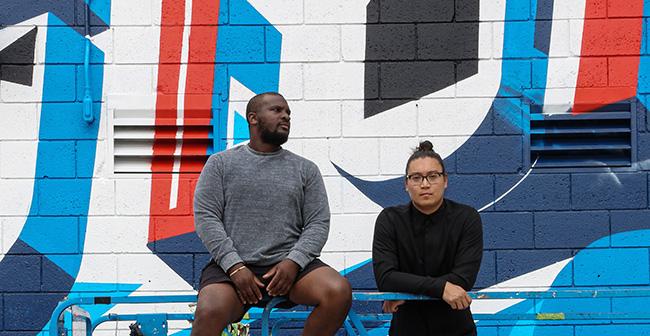 No Kings Collective’s Brandon Hill and Peter Chang
No Kings Collective’s Brandon Hill and Peter Chang
No Kings Collective Is Here To Play Forever
June 1, 2019 @ 12:00am
“A mural’s not going to stop anybody from getting murdered. But is it less likely for bad things to happen on a super visible corner? Probably.”
I’m sitting across from Brandon Hill and Peter Chang when Hill tells me with full earnestness that it’s easy for an artist to tell the narrow story of, “We painted a mural, so things are better now.” But it’s the ability to shift a community’s perception by making a street corner feel safer that truly makes an impact.
We’re sharing a high-top overlooking an eerily empty Nationals Park on a recent Saturday morning, just a stone’s throw from the pair’s latest mural capturing the Americana spirit of DC baseball. When I arrive, the artists are putting some final touches on their new work, and it’s immediately apparent to me that the founders of creative production brand No Kings Collective embrace the hustle.
I don’t mean this in a buzzwordy kind of way. They’re not “creatives” or “tastemakers” that press the flesh at events and slap their name onto a project for brand recognition. They haul gallons of paint, set up ladders, break down scaffolding, brave the elements. They paint for a living.
But that isn’t to say they don’t use their brand for good. They’re both adamant about supporting the city’s art scene, especially in neighborhoods that benefit directly from their work.
“We’re all about bringing accessibility for arts and culture to the DC community,” Chang says.
He brings a fierceness and intensity to the conversation, one that commands respect, as he and Hill open up about some of the misconceptions of how No Kings came about and what they actually do.
“I’ll take this chance right now to set that straight. We’ve done a mural for Turner Elementary in Southeast. We have multiple projects in Ward 7 and Ward 8. We work with so many different nonprofits in the city. We’re all about not taxing the artists, not taxing the people. Almost all of our events have been 100 percent free.”
The artists say community projects like Turner Elementary are no-brainers, and while they are working artists relying on paychecks from commissioned pieces, they go above and beyond on a regular basis to give back to the city’s many neighborhoods – especially those that are struggling.
“I think artwork in public spaces is the bee’s knees,” Hill says after letting me know that he’s about to get super meta for a second. “I just think that it’s the bee’s knees to be able to get paid for something that benefits the public.”
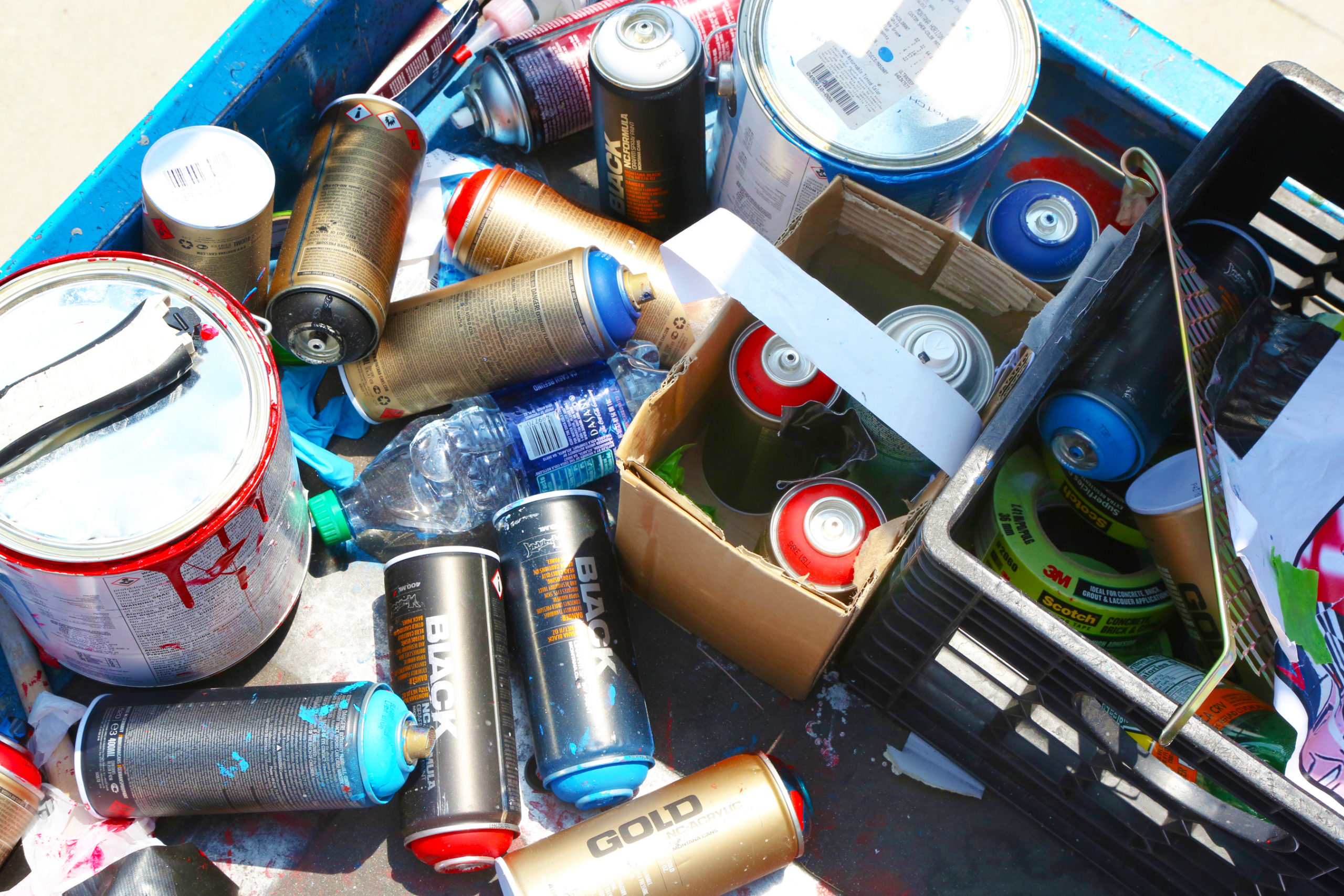
A SCRAPPY START
No Kings is a familiar name in the District, attached to a myriad of projects and pop-ups. But like so many of us that play in creative spaces, what they actually do sometimes gets lost in the shuffle of their hip factor.
“It’s interesting to hear how we’re perceived because I know what the story is, and it’s a lot more scrappy than it might seem,” Hill says.
The pair banter like an old married couple, ribbing each other mercilessly and bouncing ideas around weighty topics off one another in the same breath. Their friendship goes back 14 years to senior year of college; Hill hails from Baltimore originally, but has called DC home for the last decade, and Chang grew up in Silver Spring.
Chang says as a brand, No Kings stretches back to 2009 but became a business in 2013.
“A lot of people don’t understand a lot of the things we’ve done even before No Kings was a brand,” he says. “They think we’re just this thing that popped up out of nowhere.”
I ask the guys for clarity: No Kings is a group of artists that does large-scale public fine arts projects and gets people really excited about art content and art happenings. They use the term creative agency(ish) to demonstrate they’ve got the resources to take on projects much broader in scope than what a typical artist or art group could tackle.
When it comes to division of labor, Chang gives Hill full credit as creative director for the past year. And Hill says Chang’s ball game is creative direction in the agency(ish) space, “where murals or public artwork can be merged with social happenings or activations and require real strategic planning.” They split administrative work, business development and other unsexy parts of the daily grind evenly; they both have zero interest in taking all the credit or making it about themselves.
“We just do what we have to do when we have to do it to get things done,” Chang says matter-of-factly. “Everything just falls under the No Kings wheelhouse, so anything we produce, we just tell people we [are doing it].”
Their refreshing lack of pretention extends to their team of five part-time artists who support projects as needed. They’re not looking for the biggest names in the local art world. They need problem solvers who aren’t afraid to get their hands dirty.
“Just because someone’s a really, really talented artist doesn’t mean they’d be a good worker to paint murals because you have to problem-solve a lot of practical issues, and those issues do not exist in a controlled studio,” Hill says. “Sometimes you’re just fighting the weather or you’re coming in at night to do your projection work. You’re always defeating something and none of that can aesthetically be shown. People see flowers. You need a mixed bag of art and contractor: someone who can think with both of those brains.”
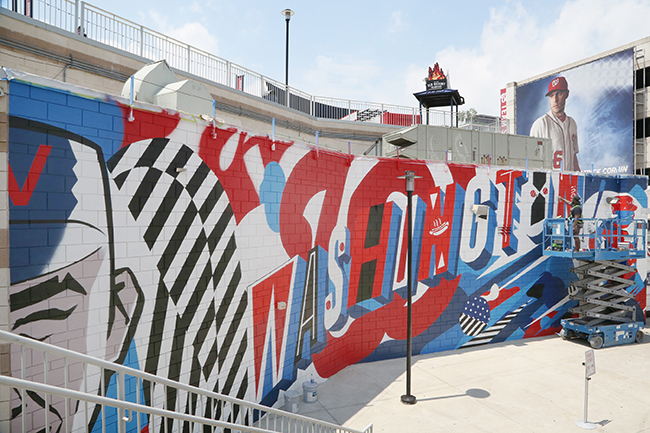
GOOD ART FIRST
It’s been a busy year for No Kings, with no plans to slow down anytime soon. The agency(ish) turns 10 this year, and Chang says they’re going big. Next up is their block party on June 29 to close out the Apple Carnegie Library’s StoryMakers Festival, and the launch of a No Kings-themed corned beef and kimchi sandwich at old-school Brentwood deli MGM Roast Beef on July 13.
Hill says they’re also currently working on 15 walls throughout the city, and while the Nats mural had its big unveiling in mid-May, he still plans to make minor changes throughout the summer to ensure it’s fan-proof. He wears the hat of a sentimentalist and a pragmatist simultaneously, walking me through the symbolism of this homage to America’s favorite pastime while also being real about the high-traffic location of the artwork.
“A really good piece of art can age, so that was a challenge to think through. How can we execute these more pressing goals – to reflect the organization and baseball as a whole and to make it as Nats-y as possible – but then also make sure it’s something that can age well both from an aesthetic and technical perspective? There’s going to be beer and popcorn and children and people leaning on the wall. How do you keep this thing looking good?”
Hill takes the collaboration seriously, especially because the team approached No Kings directly and had a vision in mind for what they wanted the piece to represent. He likens murals to getting a tattoo, where you navigate any gray area with your tattoo artist before deciding what that rose or anchor is going to look like on your body. But with the Nats, he and Chang had to encapsulate the feeling of newness in the ballpark while also reflecting the nostalgia and family values tied to the sport.
“Baseball is a really unique thing because it goes back to the 1850s, but it’s [also] a completely modern thing. Everything in this ballpark is modern – alien grass, alien dirt, Under Armour – there’s technology in this park, right? But we still think about it with a nostalgic lens. That’s a constant challenge [with] anything that’s OG: trying to always be relevant, [and] trying to explain its newness and oldness at the same time.”
Hill and Chang had another first this spring in terms of creative direction for a commissioned project. Amtrak contacted them to help visually inform its annual Sustainability Report, taking form in a mural behind social sports company DC Fray’s Brentwood office [full disclosure: No Kings shares office space with DC Fray, which owns On Tap Magazine]. Hill collaborated with Amtrak’s creative team to tell a visual story about what Amtrak does through the piece, including the incorporation of lesser-used colors in the railroad service’s color palette.
Now, he’s working with Amtrak’s head designer in the sustainability department to bring the report to life by the end of this summer, with photos of rail workers and other Amtrak employees in front of the mural on hand. Hill is all about the process: he’s drawn to projects that give him the opportunity to inform the public, and possibly shift their perception of a piece or area.
“I love the ability to be able to defend work and tell a story. If you were already familiar with a piece, that’s the best kind of art because you get to learn new things about a thing you thought you were already familiar with.”
I’m not the first reporter to ask the artists how they feel about the potential impermanence of some of their work, but they tell me it’s something they take into consideration often. Hill says in a weird way, painting a building that might be demolished soon is actually desirable because they can take greater risks with the content and attract more eyeballs.
“If it’s a really awesome piece and it’s got a shelf life, people are going to rush and make sure to catch it before that shelf life’s over.”
I ask another common question because I find it truly fascinating: how do they feel about their work being so Instaworthy? Hill doesn’t view the selfie as a unique issue for art but says it’s strange nevertheless to have an entire group of people who have nothing to do with fine art distributing your work.
“When I’m on the computer designing, I am not inserting a little character of a person to figure how good they will look,” he says.
Still, he says it’s a net win for artists if their work is included in a vanity shot on someone’s Instagram, and someone in another city can easily follow the photo credit back to the artist’s website and consume their content. Chang cuts to the chase with a more direct answer.
“A lot of our clients will say, ‘We want it to be Instagrammable.’ And we’re just like, ‘Why don’t we make good art first? And if it’s good, then people can decide [if they want to post it to Insta].’”
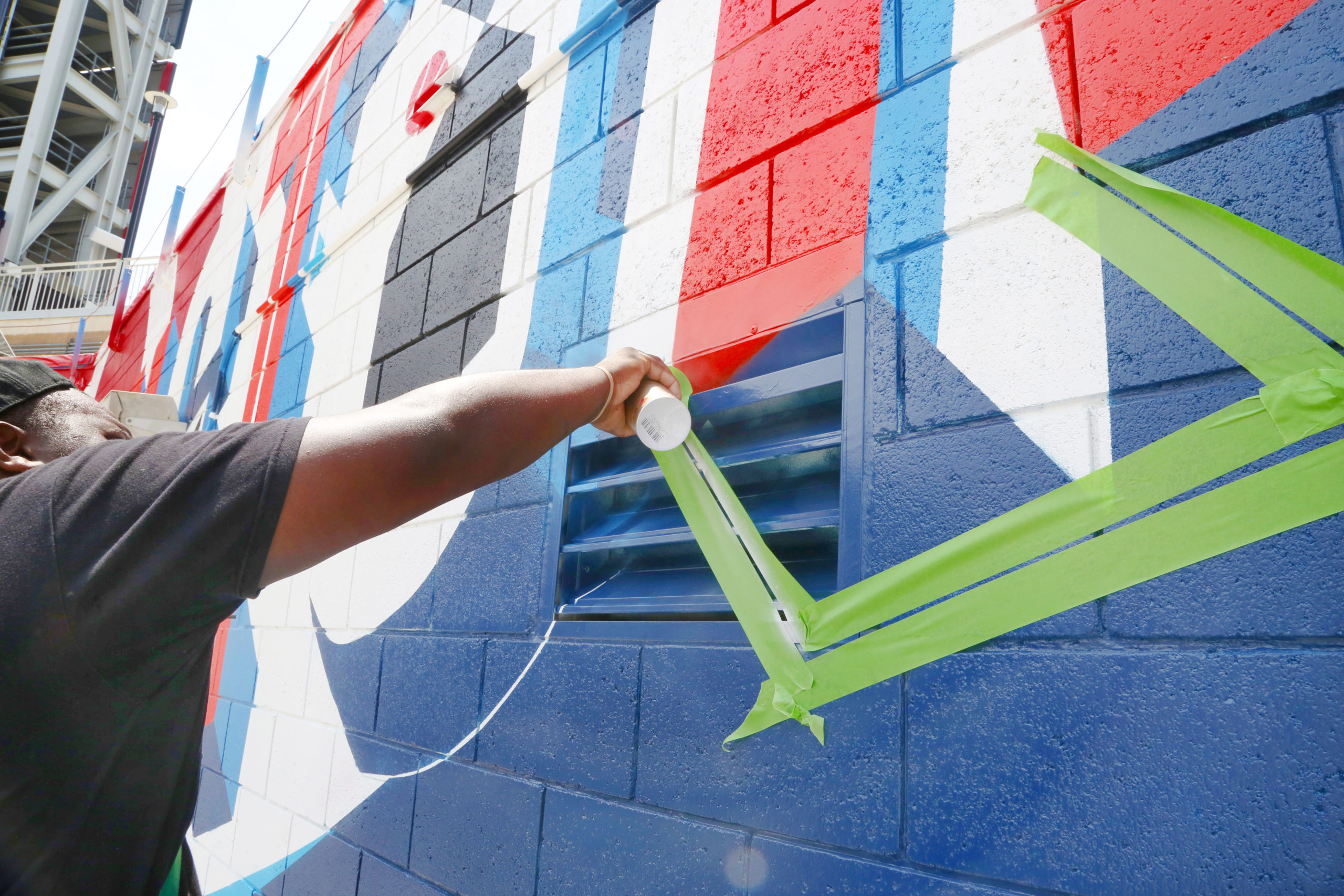
BREAD + BUTTER
Nearly 90 percent of No Kings’ current output is commissioned work pitched to Hill and Chang, but they remain selective about what projects they take on. The real bread and butter, they tell me, is the opportunity to take projects they’ve been asked to approach in a traditional way to the next level. Sometimes this happens by chance, and other times because they’re charged up about the subject matter and know they can take it up a notch in record time.
The former “Work It, Gurl” mural on 14th Street is their self-described bread-and-butter case study. The piece (originally meant to be a 20 x 20-foot mural on a building wall) was commissioned by the Whitman-Walker Clinic at Elizabeth Taylor Medical Center to bring visibility to their work in the LGBTQ+ community.
When the guys learned about the clinic’s efforts, they refused payment, got a grant from the DC Office of Planning and reached out to their sponsors for support. No Kings painted the entire building and threw 14 events in two months.
“We just ballooned that,” Hill says. “We had this public art thing, but we went beyond the aesthetic to try and figure out: How can it be used? Who can we help? But we don’t know everything so it’s kind of like if you build it, they will come, right? We knew people would interact with it. But we didn’t know how, so let’s execute the aesthetic and then let’s just see what else can happen.”
The inspiration for these projects seems to be mostly altruistic in nature, but I see a bit of a competitive flicker in their eyes – not competitive with other artists in the market, but with themselves to face the challenge of making something bigger than anyone originally though it could be.
“That’s why our goal for every event that we do, every mural we put out, every project and collaboration that we do, [is to] push the bar further,” Chang says.
A more recent example, and undeniably their most successful art event yet, was 14th Street’s UMBRELLA in April. The opportunity to plan the three-day pop-up in a mixed-use development fell into their laps; they were approached about using the space before it was torn down and decided to put something together with people they respect who are doing cool things in the District.
“Afterwards, our project manager was like, ‘Wow, I think that was the most successful art fair that DC’s ever done,’” Chang says. “And Brandon and I were like, ‘We threw an art fair?’ And then we looked back at it and we were like, ‘Yeah, it was an art fair.’”
The guys are particularly proud of this effort, as they should be – the event was planned in a whirlwind month-and-a-half and brought in at least $100,000 for participating artists.
“We made zero dollars on UMBRELLA,” Chang continues. “We didn’t take a commission. That money directly impacted those artists.”
They also speak in earnest about the crowd that UMBRELLA – and all No Kings events – brought out. Chang says it’s super diverse, which feels uncommon in what they describe as a segmented city that still self-segregates itself along money lines.
“When you go to our events, it’s all ages, all races, all different demographics. I think that’s the biggest thing we’ve been proud of is to create excitement for the arts for everyone.”
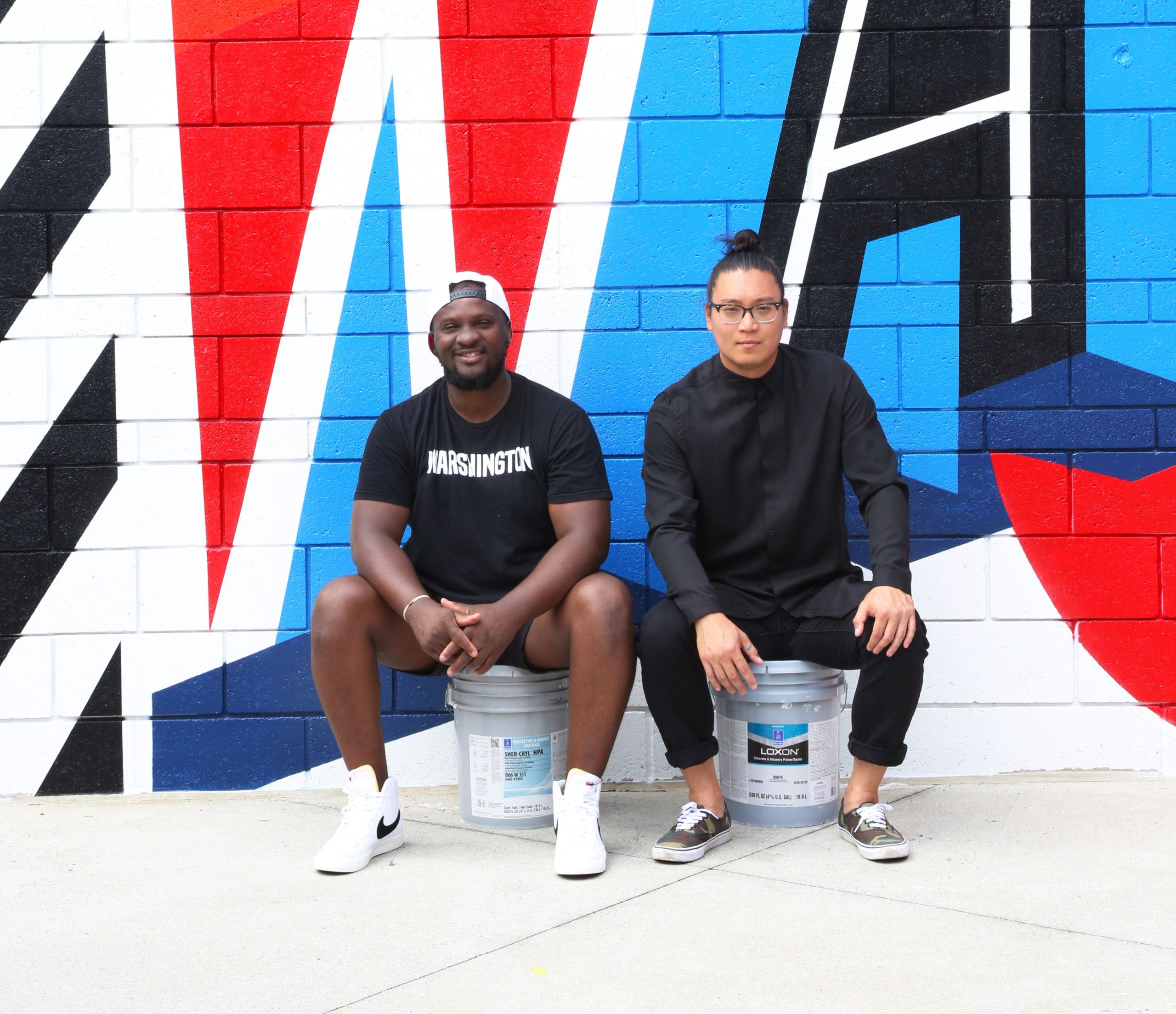
REAL RECOGNIZE REAL
I’m admittedly surprised when Chang and Hill get real with me about how they’ve had to fight to carve out a space for themselves as working artists in DC’s creative scene. They recall countless galleries and “creatives” who wouldn’t give them the time of day a decade ago; and now, some of those same folks are reaching out to collaborate with No Kings. In fact, Hill says their name is reflective of their struggle to get into the “polished art scene” in their early days.
“It strikes a nerve because we’ve been busting our asses for 10 years and no one gave us the time of day or recognition,” Chang says. “Now [when] we get a little bit of it, people come out of the woodwork just hating.”
Hill keeps it light, inviting the haters to come out and work one of his days.
“Be my guest,” he says, chuckling.
Even still, he says the memory of No Kings’ evolution is long, deep and littered with lack of acceptance from DC’s art scene.
“[The haters] are still just not getting that a smaller city can make a bigger footprint by working together and not being divisive. If someone is going to say ‘No,’ I already can’t work with you. So we’re just going to do our own content and work with people that want to work.”
At the end of the day, the guys remain unphased because they knows the proof is in the pudding.
“When it comes down to the actual creatives in the city who are doing stuff, it’s just real recognize real,” Chang says. “I know who is actually putting in the work and they command respect, as we command respect from other people in our industry. The more you can open people’s eyes up about what’s going on in the city, and what artists are doing and what real creatives are doing, then the people who have just been masquerading really can’t get away with it anymore. I think it’s slowly happening.”
But Chang and Hill are still playing the game, because they are in DC for the long haul and they’re not about burning bridges – as tempting as it may be.
“I mean look, this ain’t 8 Mile,” Hill says. “I’m not going to drop a mic after the rap battle and be like, ‘F–k you all,’ you know? It’s a small town. You’ve still got to work with these people. It’s not personal, right?”
Resiliency seems to be the secret sauce for No Kings; there’s a lot to be said for maintaining a thick skin and positive attitude when you have to play in the same sandbox with artists determined to compete for the same resources instead of banding together to create and promote interesting content.
“They view us as this new guard or whatever, but me and Brandon have been here 14 years,” Chang says.
“On a lift working,” Hill chimes in, before Chang tells it like it is yet again.
“We’ve seen trends come and go, but we’re here to play forever.”
Follow No Kings Collective on Instagram @nokingsdc. Learn about their projects at www.nokingscollective.com.







